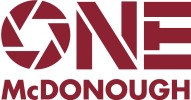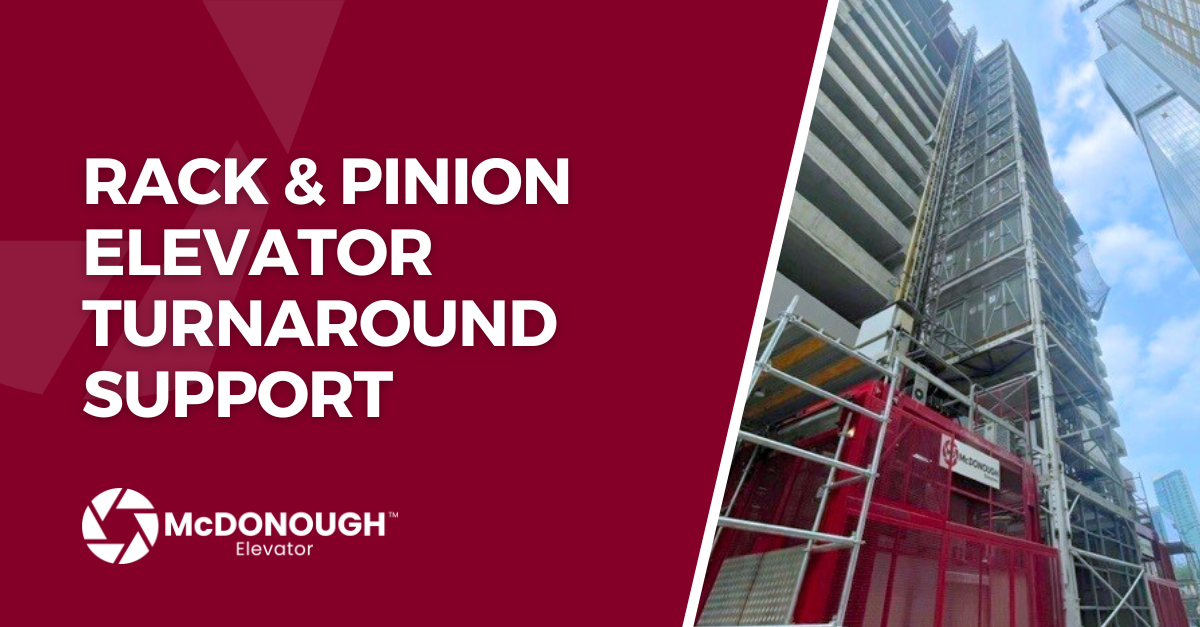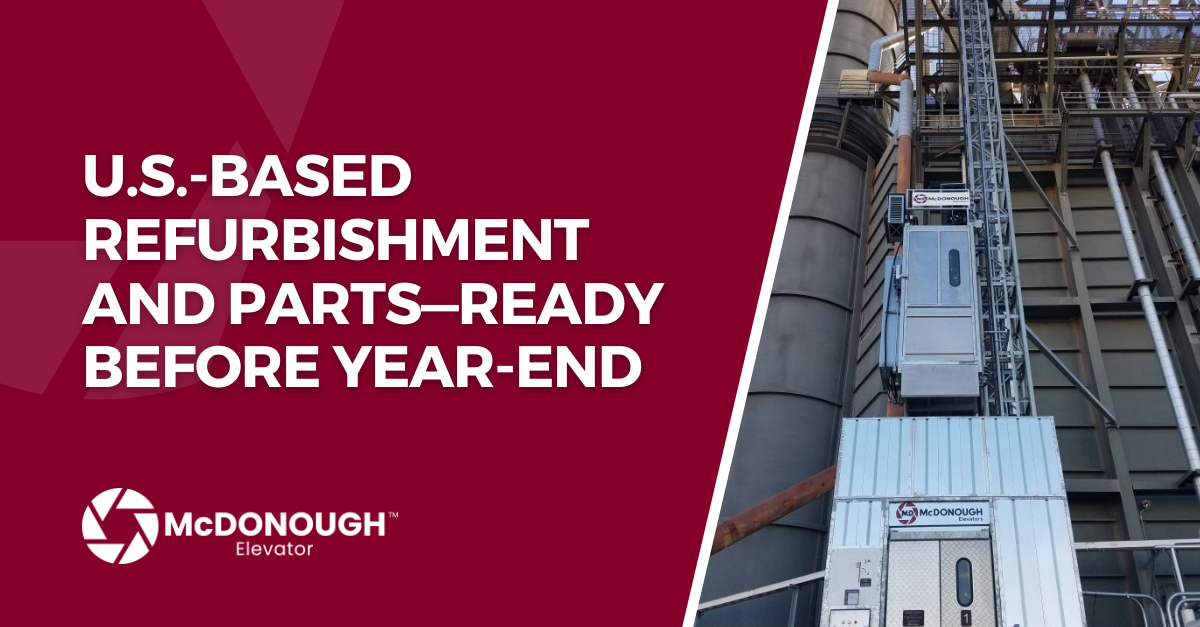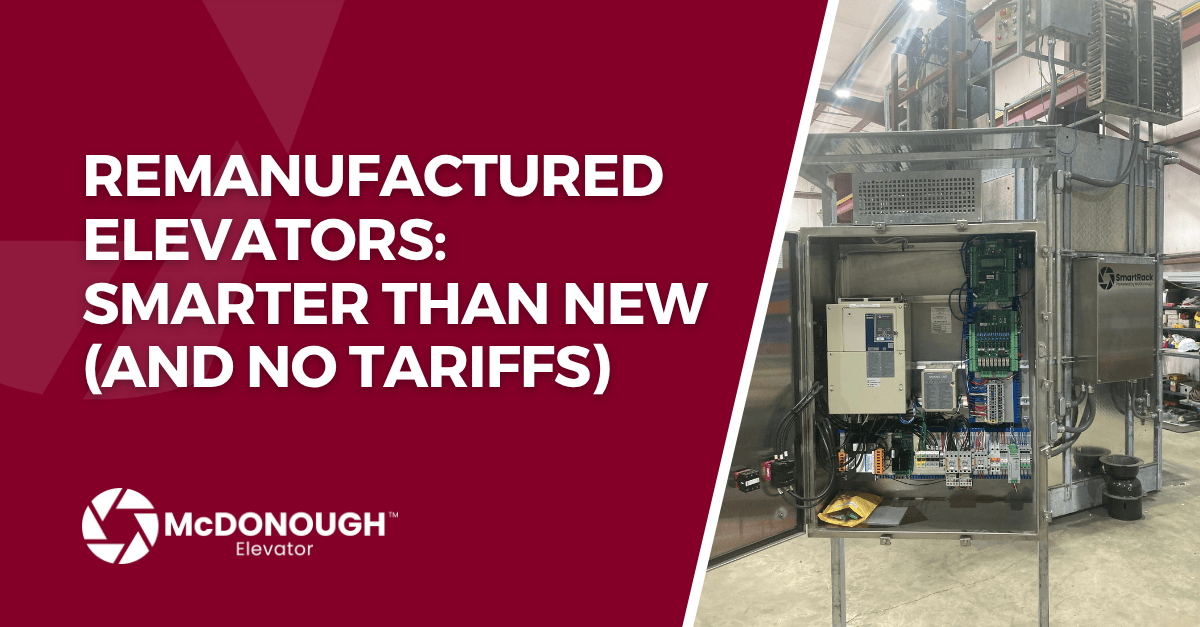If you are having your rack and pinion elevator maintained by the original manufacturer, chances are you will receive Original Equipment Manufacturer (OEM) parts. Just like in other industries (automobile, appliances and others), aftermarket parts exist for elevators. Is there anything wrong with aftermarket parts? Does a less expensive part mean a poorer quality part? And in what situations should you use only OEM parts?
To answer these questions, we’ve created a list of pros and cons to help you make a more informed decision when choosing parts for your rack and pinion elevator. In this way, you can determine your best strategy to balance cost effectiveness with the function and reliability of your elevator.
Aftermarket Parts
Pros
- Less expensive: Aftermarket parts are usually less expensive than OEM parts; how much you save varies by brand. At McDonough Elevators, we shop around to find the best price and we can give you an idea of how much that part usually costs. If the price of a part seems too good to be true, we ask detailed questions about its quality.
- Quality can be equal to or greater than OEM: In some cases, you may end up with a better part than the original. Also, in many cases, there are only aftermarket parts available. It is typical for the aftermarket companies to reverse-engineer parts to correct some of the original issues.
- More variety: There are many companies that make aftermarket parts. Some specialize in specific parts, and other companies make almost any part you can think of. More variety means greater selection and a wider range of prices.
- Better availability: Using aftermarket parts means that you have better availability. This is important if you are in a remote location.
Cons
- Quality varies greatly: Some aftermarket parts can be inferior because of the use of lower-quality materials. Stick with aftermarket brands you’re familiar with or are recommended by an elevator service company that you trust, even if these parts cost a bit more.
- May not have a warranty: To keep costs down, some aftermarket parts do not have a warranty.
OEM PARTS
OEM parts are made by the elevator’s manufacturer. These match the parts that came with your elevator when it was installed.
Pros
- Easier to choose your part: There is usually a part number and only one type that will work. You don’t have to worry about assessing the quality of different brands and prices.
- Greater assurance of quality: The OEM part should work exactly as the one you are replacing. It is the part that was manufactured for the elevator and provides a peace of mind in its familiarity and performance.
- Comes with a warranty: Most elevator companies back up their OEM parts with a warranty.
Cons
- More expensive: OEM parts will usually cost more than an aftermarket part, as much as 60% more.
- Need to be bought from the manufacturer: This limits the number of places from where you can buy. You can request OEM parts from your local service provider, but it may take longer to get your elevator repaired since the parts must be ordered and sometimes, manufactured.
- Quality may not be superior: You paid the extra money for an OEM part, hoping that it was vastly better than an aftermarket part. Perhaps the original manufacturer has even said that you must use OEM parts or you are in violation of U.S. code requirements. However, most buyers know that is a scare tactic and not an accurate statement. Many aftermarket parts are equal to or better than OEM parts. So you might be paying extra for no valid reason.
Which Is the Best Way To Go?
This is a matter of reliability and value for money. Whether you choose to use only OEM or prefer the flexibility of aftermarket parts, McDonough Elevators can help guide you to a decision that is best for your business. And, as always, if the part is purchased through McDonough we stand behind it 100% regardless of whether it is OEM or aftermarket. Put our experience to work for you in providing the best in both cost effectiveness as well as peace of mind knowing that you have the best part for the job.




